
Any facial plastic surgery is a serious surgical intervention that requires a rehabilitation period. It is important for plastic surgeon patients to follow all the doctor’s recommendations and prescriptions so that the rehabilitation is successful and without serious complications. Special programs and complexes have also been developed to help.
Read in this article
Program Goals
The rehabilitation course is selected individually, it all depends on:
- patient's age;
- specific areas of the face where surgery was performed;
- concomitant diseases;
- complications that arose during the operation.
But regardless of these factors, doctors have identified the general goals of the rehabilitation program after facial contouring:
- Relieving the patient of pain in the first days after surgery.
- Rapid reduction of swelling, getting rid of hematomas (bruises) in a short time.
- Preventive measures aimed at preventing scar formation.
- Complete restoration of blood circulation in areas of the face that have undergone changes.
- Restoring skin sensitivity.
- Consolidation of the result while simultaneously preventing postoperative complications.
And here is more information about rehabilitation after lipofilling.
General principles of rehabilitation after plastic surgery
In order for the skin of the face and the entire body to quickly recover after plastic surgery, doctors recommend:
- Do not abandon the gauze bandage in the first 1 - 2 days. The doctor applies it immediately after surgery and secures it with an elastic bandage across the chin so that it does not slip. The bandage is changed every day, during this manipulation the surgical sutures are treated with antiseptics. The bandage may interfere or press – these are normal sensations and are not a reason to refuse it.
In the first 2 - 3 days, blood may seep through the gauze bandage, which is normal and should not bother the patient. Most often this happens in the first hours after the next dressing.
1st day after rhinoplasty 2nd day 3rd day 6th day
- In the first few days after facial plastic surgery, the doctor prescribes antibiotic therapy - you need to complete the full course. Antibacterial drugs will prevent the development of infection in wounds (this complication occurs often if drainage is not carried out). In the absence of fluid outflow in wounds, it is absorbed by soft tissues, which contributes to the development of not only extensive edema, but also infection.
The drains are removed on the second day, but antibiotic therapy is continued for another 5 - 7 days.
- Carry out oral hygiene regularly. Difficulties may arise with this, since in the first day it is impossible to open the mouth wide. In this case, you should resort to a children's toothbrush or mouthwash - this will be an effective replacement for your usual hygiene.
- Avoid washing your hair for the first 2 days after removing the gauze bandage from your face. You won't be able to dye your hair for several weeks, so doctors recommend doing this procedure before facial contouring surgery. As a rule, the first staining can be carried out no earlier than after 4 - 6 weeks.
- A diet must be followed. In the first days, you are allowed to consume only liquid foods - broth, natural yogurt, jelly, fruit or vegetable juices.
If plastic surgery was carried out with penetration to certain areas of the face through the oral cavity, then only yogurt may be allowed - this is the optimal nutritional option, because the fermented milk drink will restore the intestinal microflora (it is often unbalanced due to antibacterial therapy).
Only on the 5th - 7th day of rehabilitation you can eat your usual foods, but avoid nuts, seeds, hard apples and pears - this is what causes great tension in the facial muscles.
- It is necessary to limit your own activity. We are not talking about bed rest, but about abstinence for 10-15 days from sexual relations, sports, work in the garden beds, sudden bending, and heavy lifting. Such activity leads to an increase in blood pressure, which automatically increases the risk of postoperative bleeding or the formation of extensive bruises on the face.
- Take it easy on swelling and bruising. Swelling of the face disappears 3 to 5 days after surgery, but hematomas can “linger” for a long time. To speed up the recovery process, you need to apply a cold compress to problem areas every 20 minutes with a break of 20 minutes. The skin needs to be protected from direct exposure to cold, so the compress is placed on a gauze bandage or cloth.
To quickly resolve bruises, you can use lotions with a decoction or infusion of arnica, vitamin K, but such prescriptions are made only by the attending physician.
- Avoid using too hot or cold treatments on your face. Several weeks after the operation, the sensitivity of the skin is reduced - this condition goes away, but after 1 - 1.5 months. At this time, you can get burns or frostbite as a result of careless handling of various devices; even washing with excessively hot water is dangerous.
- Go through the ear cleaning procedure. This will be needed if discomfort occurs in these places, or the patient complains of hearing loss. A common consequence of facial contouring is blood leaking into the ears immediately during surgery. This does not pose any great danger; it is enough to just clean the ear canal and the functionality of the organ will be restored.
Interestingly, pain after contouring surgery is practically absent or mild. In the first 1 - 2 days, the doctor may prescribe painkillers, but if the discomfort continues, then you will need to notify the attending physician.
General rules of rehabilitation include:
- refusal to visit the bathhouse, sauna and take a hot bath for 60 - 100 days;
- exclusion of alcoholic beverages from the diet for 30–50 days;
- refusal of solarium or sunbathing for 2 - 3 months.
Procedures after rhinoplasty
Rhinoplasty is a complex operation, although it is considered the first of all the variety of possibilities available to plastic surgeons. In addition to the classic recommendations for rehabilitation after the procedure, rhinoplasty implies the following restrictions during the recovery period:
- for the first 2 weeks after the manipulations, the patient is allowed to sleep only in a supine position; he cannot even turn on his side, much less on his stomach;
- You cannot wear glasses for 1 month - neither correcting visual acuity nor sunglasses;
- It is prohibited to use decorative or medicinal/care cosmetics for 2 weeks.
Microcurrents
To ensure that rehabilitation takes place without complications and in a short time, the doctor may prescribe the following procedures:
- Microcurrent therapy. The procedure perfectly relieves pain and quickly solves the problem of swelling. Microcurrents “work” as an anti-inflammatory, immunomodulatory and detoxifying agent. They have a tonic effect on all muscle groups and improve regeneration processes in epidermal cells.
- Cosmechanics. This procedure is especially effective for getting rid of bruises. According to patients and doctors, with normal rehabilitation, bruises disappear only after a week or more, which makes it impossible to lead a normal lifestyle. Cosmechanics reduces this period by half.
To learn about what Cosmechanics is and its effects, watch this video:
Rehabilitation program after contouring
Without an individual approach to the selection of rehabilitation procedures after facial contouring surgery, the period of complete recovery may take 6 months or more. In addition to standard treatment of surgical sutures and scars beginning to form, dietary and lifestyle restrictions, doctors can make the following prescriptions:
- facial laser therapy – active production of collagen and elastin by skin cells begins, which leads to rapid scarring and resorption of rough sutures;
- Ultrasound therapy – has an anti-inflammatory and analgesic effect, makes metabolism faster and more complete;
- biorevitalization, mesotherapy - procedures that can maximally moisturize the skin of the face and saturate it with nutrients;
- lymphatic drainage is a massage that removes toxins and waste from dermal cells, accelerates metabolic processes, and eliminates swelling and bruising in a short time.
Ultrasound therapy
It is important to use professional facial skin care cosmetics during the rehabilitation period. It is selected by a doctor and can be used only after the scars have healed and swelling and bruising have disappeared. Cosmetics for restoring skin health after facial contouring contain antioxidants, vitamins, and minerals, which together give an extremely positive result.
All rehabilitation measures begin no earlier than 4 days after surgery. It is important that by this point the patient does not complain of pain.
Read more about the consequences of a facelift here.
Rehabilitation after facial contouring and other interventions is a program aimed at rapid recovery of the patient and prevention of complications. Thanks to an individual approach to the selection of specific procedures and a complex effect on the facial skin, it is possible to quickly get rid of bruises, swelling, rough scars and scars.
Useful video
About rehabilitation after facial plastic surgery, watch this video:
Rehabilitation after facial plastic surgery lasts about two months. During this time, you must follow certain rules and follow the recommendations of the plastic surgeon. This will speed up recovery, make the rehabilitation period comfortable and painless and improve the aesthetic result of plastic surgery.
Early rehabilitation period: 2 weeks
Swelling after facial plastic surgery, hematomas and minor pain persist during the early rehabilitation period, which lasts about two weeks. The severity of edema and hematomas in the area of the surgical wound is maximum in the first 3-5 days after correction, and then the bruises and swelling gradually disappear. Painful sensations are intense only in the first day, and already from 2-3 days the pain decreases.
To reduce discomfort and swelling during rehabilitation after facial plastic surgery, it is recommended to use cold compresses. They should be applied for 15-20 minutes, then take a break for 20-30 minutes and repeat the procedure.
You can use anti-inflammatory drugs that do not affect blood clotting. To reduce pain, you can take analgesics on the first day. Antibiotics may be prescribed to prevent bacterial complications.
Hardware intervention methods help speed up recovery. Microcurrent therapy is actively used in the early postoperative period. At the SOHO CLINIC, it is performed using a modern Skin Master Plus device. Magnetic therapy, ozone therapy, UHF, and exposure to the skin with an infrared laser give good results.
At the SOHO CLINIC medical center, after facial plastic surgery, all patients have the opportunity to undergo a rehabilitation course of three physiotherapeutic procedures free of charge.
A competent and responsible approach to rehabilitation after plastic surgery not only speeds up recovery, but also contributes to achieving the most natural and high result of correction. Rapid healing of postoperative wounds with the formation of invisible scars is an equally important goal of the recovery period, which can be achieved using hardware cosmetology methods.
Rehabilitation after facial plastic surgery: basic rules
Throughout the entire rehabilitation period, you must adhere to the surgeon’s recommendations and follow certain rules. While swelling is pronounced after facial plastic surgery, physical activity should be avoided in every possible way. It is advisable to refrain from intimacy, since an increase in blood pressure can increase the severity of edema.
Physical activity after facial plastic surgery is contraindicated for approximately 2 months. This applies to running, gym classes, fitness, yoga and Pilates. Swimming in open water or pools is strictly prohibited. You cannot visit the sauna, solarium, or massage rooms. Avoid stress, overwork, and direct sunlight on your face.
After a facelift, for some time (individually, it depends on the scale of correction and the body’s reaction), you will feel tightness of the skin in the correction area. This is a normal reaction to plastic surgery. Try to avoid violent expressions of emotions to reduce the load on facial muscles and skin.
To reduce the load on the masticatory muscles, you should follow a diet based on liquid and pureed food for a couple of weeks after plastic surgery. The diet should remain complete, high in protein, antioxidants and vitamins. You can include protein shakes in the menu. Amino acids have an anti-catabolic effect and promote the healing of postoperative wounds. Take vitamin C, which is a powerful antioxidant and is involved in collagen synthesis.
You can wash your hair after plastic surgery no earlier than two days later. Dye your hair after 4-8 weeks. You should not use decorative cosmetics for 2-4 weeks. During the entire period of rehabilitation after facial plastic surgery, you should not take medications that reduce blood clotting. If you are taking medications for chronic diseases or hormonal medications, be sure to tell your doctor.
You can learn more about the features of rehabilitation after facial plastic surgery at a free consultation with a plastic surgeon at the SOHO CLINIC medical center.
Today, plastic surgery on the face is no longer considered something new and exotic. With their help, you can not only become younger, but also eliminate defects in appearance, correct the contour of the face, remove asymmetry, and hide the consequences of injuries and burns. Non-surgical types of facial plastic surgery - oval correction using threads or injections. More serious changes in appearance require surgery. This includes lifting the corners and changing the shape of the eyes (canthoplasty and its types), eyelid correction, eliminating excess skin in this area (blepharoplasty), changing the shape of the nose (rhinoplasty) or ears (otoplasty), “moving” the eyebrows (browlift), and also circular face lift, neck rejuvenation and much more. After the work of a cosmetologist or surgeon, the patient must undergo a rehabilitation period. Find out how long this stage lasts, as well as what reviews different types of facial plastic surgery receive.
What is considered normal after plastic surgery?
When preparing a patient for surgery, the specialist must explain what to expect after the procedure. This will allow you to avoid force majeure and stressful situations. Anesthesia is an integral part of surgery. Doctors prefer to use general anesthesia. After waking up, the patient may feel dizziness, slight weakness, sometimes nausea, as well as pain in the areas where the plastic surgery was performed. To reduce discomfort, doctors sometimes prescribe analgesics, but for minor procedures medications are usually not required.
After blepharoplasty, the patient wakes up with a blindfold. It is removed after a few hours. Surgeons advise people who suffer from claustrophobia to take this point into account.
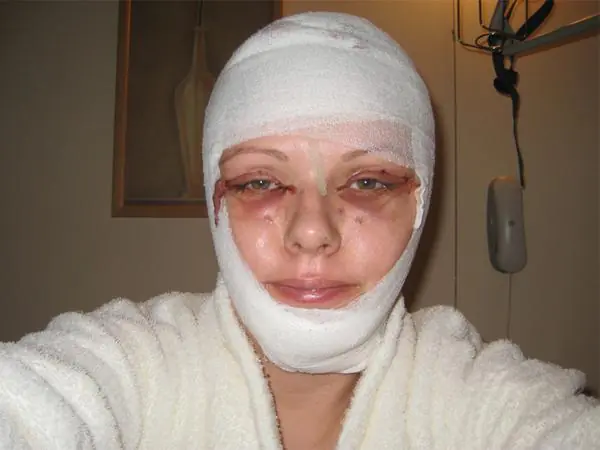
Within 1–3 days after plastic surgery, swelling, hematomas, and bruises appear on the patient’s face. Doctors explain that this is normal if surgery has taken place. Compresses can be applied to injured skin. Medications that should be used only as prescribed by the attending physician will also be effective. Swelling may subside in the evening and appear in the morning. Everything will return to normal when natural lymph and blood flow improves.
Attention! If swelling and hematomas do not disappear from the face 3-4 weeks after plastic surgery, this indicates complications.
Complications and side effects
Competent actions of the doctor during the operation are the best guarantee that the patient will not have to face negative consequences, complications, or unsatisfactory results. Therefore, the first and most important rule is to take a responsible approach to choosing a clinic and specialist. Sign up for a consultation, ask the doctor all the questions that concern you, ask how facial plastic surgery is performed, and how high the risk of complications is.
Of course, the doctor can assure you that there have been no dissatisfied patients in his practice, and the procedures go like clockwork. However, the human factor is always present, and even the most qualified doctor is not immune from mistakes and accidents. Another thing is how adequately the surgeon assesses his capabilities and professional skills. Reviews will help dispel doubts. Read what other patients say about the operation you have chosen, the specialist and the clinic as a whole.
The doctor must obtain a complete understanding of your health condition, order an examination and make sure that you have no contraindications to surgery. Otherwise, the most unpredictable complications are possible!
Before performing facial plastic surgery, the doctor must morally set the person up in a positive mood, provide him with psychological comfort, and also explain the peculiarities of his lifestyle on the eve of the operation. Usually the preparatory period lasts about 2 weeks. During this period, the patient is prohibited from smoking, taking alcohol and certain medications, drinking a lot of coffee, and also limiting himself in some other things. Similar recommendations apply to the postoperative stage.
Ignoring the rules of preparation and rehabilitation by the patient is also fraught with side effects and difficulties during the recovery period. Minimize risks by following all doctor's instructions.
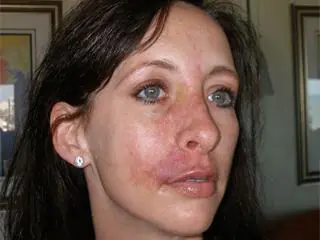
Due to unsuccessful facial plastic surgery or non-compliance with medical recommendations during the recovery phase, the patient may encounter the following complications:
- hematomas that do not resolve on their own and require surgical intervention;
- slow healing of wounds. Commonly found in people who smoke;
- development of inflammation. This may be due to insufficient sterility during facial plastic surgery or the body’s reaction to certain drugs;
- damage to the nerves that are responsible for muscle function;
- formation of rough scars on the patient’s face;
- suppuration, suture dehiscence;
- tissue necrosis as a result of their detachment or strong tension. It is rare, and is usually associated with medical error or diabetes, atherosclerosis of the patient;
- deformation of the oval of the face;
- post-traumatic pigmentation;
- consequences associated with a specific type of facial plastic surgery: hair loss after a circular lift (if the hair follicles are damaged), non-closure or inversion of the eyelids after canthoplasty, etc.
Attention! In some cases, complications after facial plastic surgery are associated with the individual characteristics of a particular person’s body.
Duration of rehabilitation
If the operation was successful, the patient diligently does everything the doctor tells him, then the recovery period will not be too long. For the first 2–3 days, it is advisable for a person to stay in a hospital, where a doctor will monitor the wound healing process. The patient must then see the surgeon on an outpatient basis. His stitches can be removed 9–15 days after facial surgery. Recovery depends on the complexity of the surgical or cosmetic intervention, and the person’s health status (in particular, immunity). On average, rehabilitation lasts about 2–3 weeks, but for different types of facial plastic surgery these figures differ:
- recovery after blepharoplasty requires about 1.5 weeks;
- after facelift or rhinoplasty - a month.
Of course, this does not mean that after 2-3 weeks a person will look perfect. Surgeons have a concept called “shrinkage” of the patient’s face. The effect of the procedure becomes noticeable 1–4 months after the operation. And in the case of rhinoplasty, you can see the result of a specialist’s work even 6–12 months after surgery.
The patient needs to be patient and visit the doctor for follow-up examinations. After all, if everything went well, the result is guaranteed to last for several years. But if complications cannot be avoided, the rehabilitation process can drag on for many months. It is possible that the person will need repeated surgery.
How to speed up healing at home

The most important thing in the rehabilitation period is the patient’s compliance with medical recommendations. The doctor will certainly tell you about the importance of leading a healthy lifestyle and explain what you can do and what not.
Get ready to limit yourself in physical activity and follow a diet: nothing hard, spicy, too salty, a minimum of tea and coffee.
Washing your hair is allowed only 2–7 days after the procedure, and you need to sleep in a certain position. The first year after facial plastic surgery you should not sunbathe. To speed up the healing of wounds and eliminate side effects, you can use additional agents and medications.
Compression garments, bandages
The doctor applies the first bandage to the face immediately after the operation, and removes it a day later to apply a new one. In the future, the patient will need to wear a special face mask - compression garments made of breathable fabric that holds the oval of the face in the correct position and prevents the seams from coming apart. In addition, the bandage has a light massage and toning effect, accelerates blood flow and promotes rapid rehabilitation of the patient after facial plastic surgery.
The surgeon will advise which underwear is best to buy. You can purchase a face mask in online stores specializing in such products. The cost depends on the brand and type of bandage. An eye mask after blepharoplasty costs about 800–900 rubles. A bandage after ear surgery or a facelift will cost from 1,500 to 3,700 rubles. Contact sellers who have a good reputation and guarantee a refund or exchange if expensive underwear does not suit you.
Advice. Due to the gradual reduction of swelling in the face, a patient who has undergone plastic surgery sometimes requires several bandages of different sizes. For these cases, there are models that are adjustable using Velcro or fasteners.
Cosmetical tools
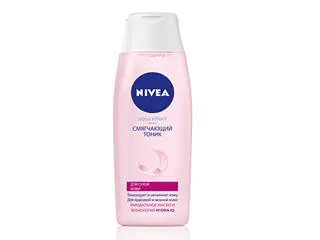
For the first 7–14 days, you should not wash or paint your face. 1 week after plastic surgery, the doctor may allow you to use cleansers that do not require rinsing: cream, milk.
To moisturize your skin, choose an alcohol-free toner or lotion. It is advisable that the product be intended for dry or normal dermis, even if you used other products before facial plastic surgery.
Choose the most natural, hypoallergenic cosmetics without fragrances or dyes. Thick, textured creams, especially in the area of facial plastic surgery, are prohibited!
But drugs with a tightening effect and intended for skin regeneration are quite appropriate. To cool your eyelids after blepharoplasty or canthoplasty, buy a special mask in the form of glasses.
Use professional products. Before any cosmetic procedures, it is important to obtain the approval of the doctor who performed the facial surgery on the patient.
One of the reputable brands that produces restorative cosmetics is MEDICALIA. The drugs improve the condition of damaged skin, eliminate hematomas, reduce the formation of unsightly scars, and facilitate rehabilitation after facial plastic surgery. Healing products from the Medi-Heal line are not cheap. For example, a cream with a volume of 50 milliliters will cost from 4,500 rubles, and a cooling and soothing serum (15 milliliters) will cost over 3,000 rubles. Also, after facial plastic surgery, you can use Planetary Herbals horse chestnut cream (1000 rubles for a 113 gram jar). It moisturizes the skin, improves blood circulation, and relieves puffiness.
There are other cosmetics that can be used after facial surgery. Buy something that suits your skin and won't put too much of a strain on your family budget.
Medications
A multivitamin complex will help reduce swelling and bruising, as well as speed up the rehabilitation process. Choose a drug that contains ascorbic acid, vitamins K and A - these beneficial substances strengthen the walls of blood vessels and accelerate tissue healing after facial plastic surgery. For the same purpose, doctors prescribe other medications to patients (orally and locally). For example:
- Venarus - from 600 rubles for 30 tablets;
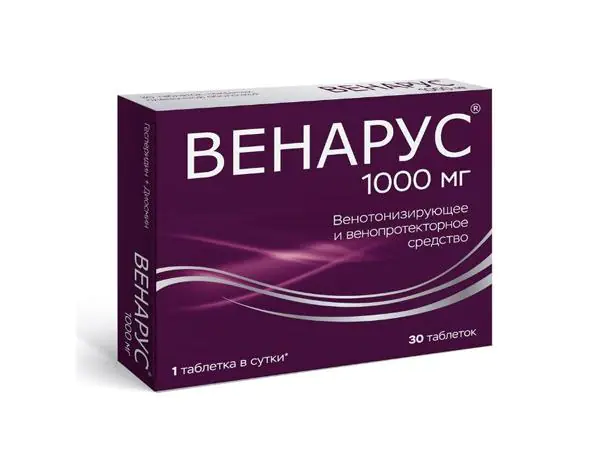
- Phlebodia - from 650 rubles for 15 tablets;

- Troxerutin gel - from 40 rubles per tube;
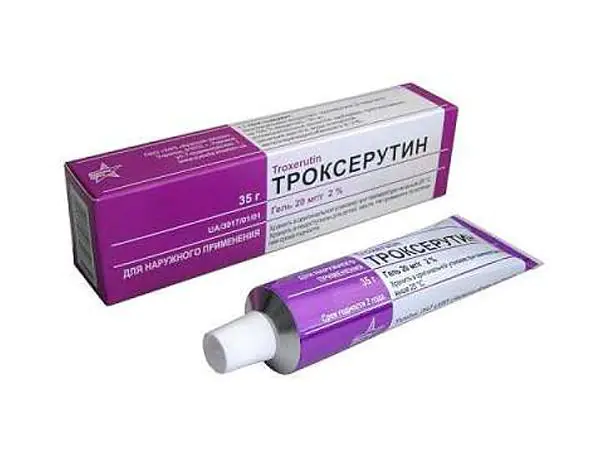
- Heparin ointment - from 60 rubles.
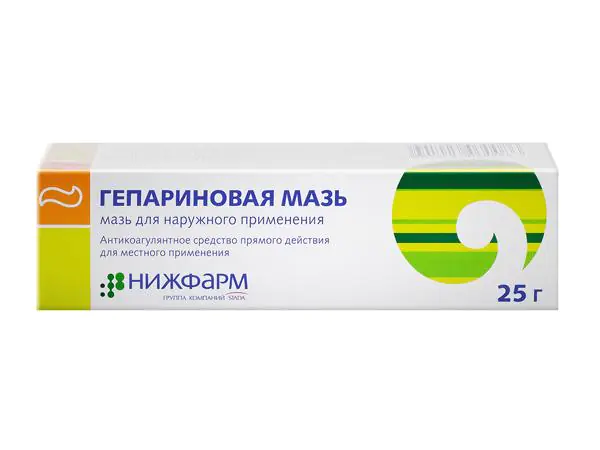
To quickly heal scars, as well as to prevent them, some patients use Zeraderm gel (about 2,000 rubles). It forms a water-repellent film on the skin, regulates moisture balance, and relieves redness.

To eliminate scars or prevent their appearance, you can use the Mepiform patch (approximately 1,200 rubles).
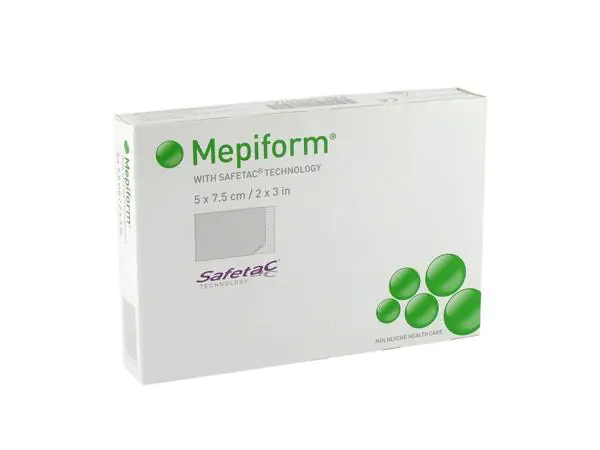
Advice. Cosmetic ice, prepared independently or purchased in a store (FITOICE, Anne Semonin and others), will help the patient eliminate swelling after facial plastic surgery.
Physiotherapeutic procedures
According to the doctor's decision, a patient who has undergone facial plastic surgery and is in hospital treatment can undergo special procedures. They shorten rehabilitation time and help the body recover faster. Such techniques include:
- Ultrasound therapy. Has an analgesic, anti-inflammatory effect, improves blood flow.
- Magnetotherapy. Accelerates tissue regeneration and collagen synthesis.
- Microcurrent massage. It alleviates the condition of the patient whose face hurts after plastic surgery, and also reduces swelling, improves metabolism, and normalizes the functioning of the sebaceous glands.
- Cryotherapy is exposure to cold. Pain relieves and relieves inflammation after plastic surgery.
- Mesotherapy and biorevitalization. Hyaluronic acid injections help moisturize the skin, restore its elasticity, accelerate blood flow and shorten the recovery period.
The cost of physical therapy after plastic surgery depends on the clinic. The number of procedures and the frequency of their completion by the patient is determined by the doctor.
Patient reviews
A large number of forums are replete with a variety of reviews about facial plastic surgery. This is understandable: some of the patients were lucky with the doctor, or the rehabilitation period turned out to be short and relatively painless. And someone was dissatisfied with the result and dreams of returning everything back, scolding the clinic and the specialist. Before going to the doctor, it is useful for a potential patient to familiarize himself with different points of view in order to make his own decision.
The author of this review assures that she is grateful to the surgeon for correcting her nose. But rehabilitation turned out to be difficult and long. And this is almost the only thing that could stop the patient before deciding on facial plastic surgery.

This woman had a facelift (skin tightening). She was very pleased with the result of the facial plastic surgery, although the recovery was unpleasant: the lymph nodes in the neck area were swollen, she had to take analgesics for several days and even sleep while sitting. For some time after the operation, noticeable scars caused discomfort to the patient.

The following review, dedicated to facial plastic surgery, deals with the correction of the upper eyelid in a woman with an Asian type of appearance. Among the main conditions for a successful operation, the user noted the importance of choosing a doctor.
Overall, the woman was delighted with her updated appearance. Among the disadvantages of blepharoplasty, the patient personally noted that the operation does not eliminate wrinkles around the eyes. In addition, after plastic surgery she had to unexpectedly change her image.

Women decide to undergo plastic surgery, trying to restore youth and beauty to their faces. The author of this review has undergone several different operations, so she fully learned how terrible complications can be.

In particular, a woman underwent a facelift and faced a difficult postoperative period, as well as negative consequences of plastic surgery in the form of bald spots in the places where the doctor cut the skin (behind the ears):

In recent years, cheek plastic surgery has become popular, namely the removal of Bish’s lumps. This way you can make your cheekbones more expressive. However, doctors warn that as a result you can get a not entirely beautiful oval face. One of the patients who had cheek surgery speaks about the same thing.

Correcting your appearance by contacting a cosmetologist or plastic surgeon means hope for a miracle, risk and fears. If the patient is mentally prepared for plastic surgery, chooses a reputable clinic and does not neglect the doctor’s recommendations after the operation, he has every chance to be satisfied with his new face. If doubts ultimately outweigh the desire to change something in your appearance, it is better to refuse surgical intervention and try to love yourself and your appearance for what it is.
Useful videos
How is the recovery period and rehabilitation after facelift surgery?



